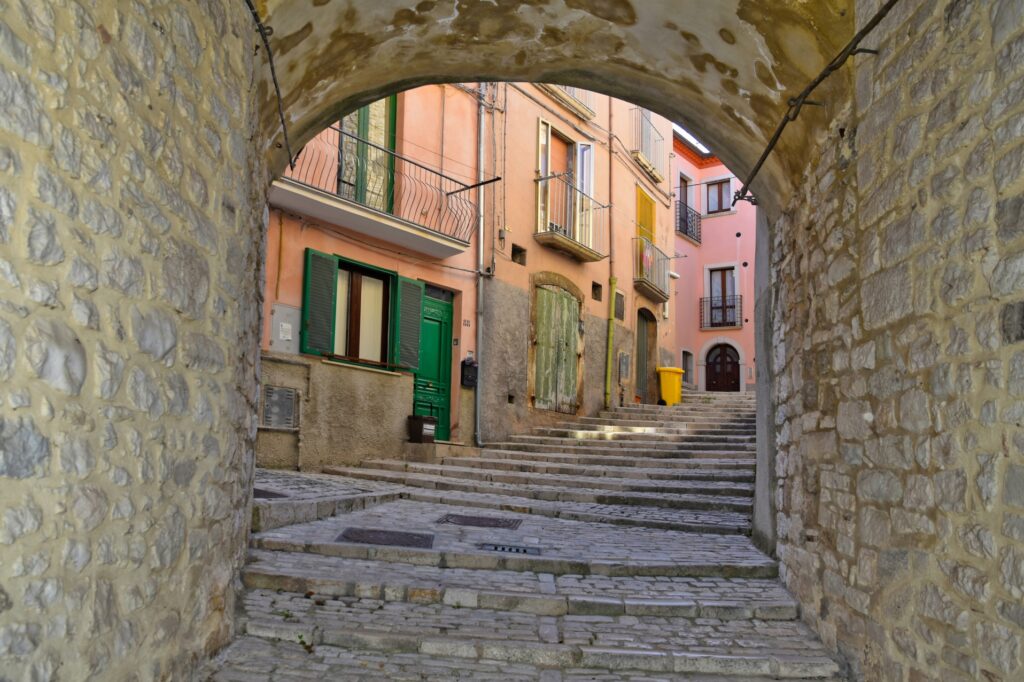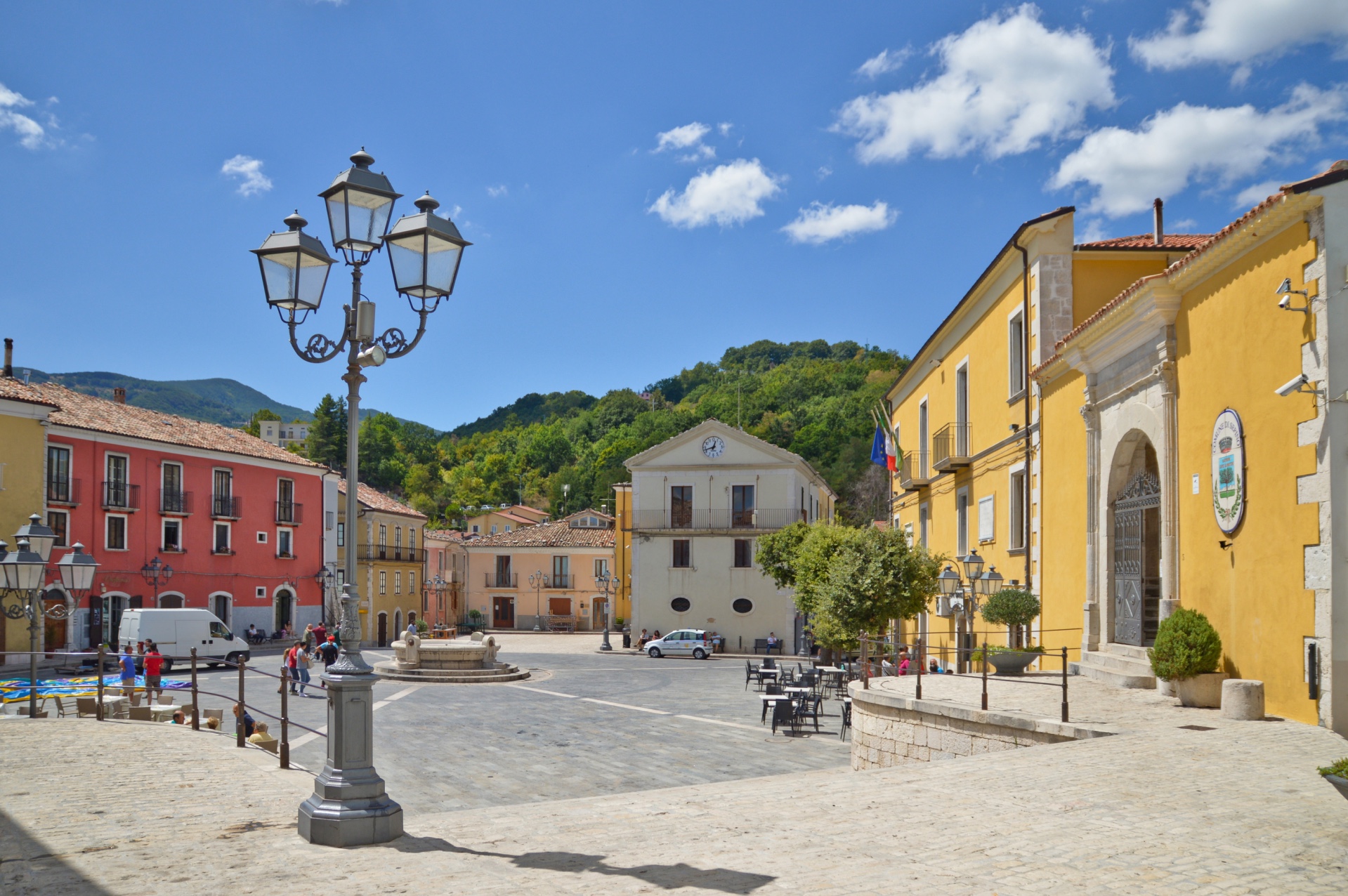Nestled in the Molise region of Italy, the village of Sepino is rich in history and natural beauty. Its name derives from the Latin word saepum, meaning “enclosure,” which referred to the wooden palisade that enclosed the area designated for animals along the ancient tratturi, a seasonal migration route for livestock.
Sepino’s long history is visible everywhere in the village. Walking through its streets, you can admire the ancient castle, the church of San Nicola di Bari, the ruins of the Roman theater, and the well-preserved arches of the Roman aqueduct. But the most impressive site is undoubtedly the archaeological area of Saepinum, the ancient Roman town, which still preserves its original urban layout, complete with its walls, towers, and gates.
Saepinum was founded by the Samnites in the 6th-5th centuries BC, and it was later conquered by the Romans during the third Samnite War in 293 BC. The town flourished under Roman rule and became an important center for trade and commerce. It was surrounded by walls, towers, and gates, and its streets were lined with shops, public buildings, and private houses. The Roman theater, which could seat up to 2,500 people, was one of the largest in the region.
The town declined after the fall of the Western Roman Empire and was abandoned in the 9th century AD due to the Saracen invasions. It was later rebuilt on a nearby hill and became the medieval village of Sepino, which still exists today. It is dominated by the castle, which was built in the 11th century and served as a defensive stronghold against the invading Normans.
The archaeological itinerary is closely linked to the naturalistic one, as visitors can still walk along the ancient Pescasseroli-Candela tratturo. This grassy track has enabled the seasonal movement of millions of sheep from the Abruzzo and Molise mountains to the Puglia plains, since the times of the Samnites. Transhumance is a culture, a civilization that, during the Aragonese era in the 15th century, was codified according to the rules imposed by the Regia Dogana di Foggia.

The area around Sepino is rich in high forests. If you enjoy trekking, you should visit the Pianoro di Sepino, 11 km from the town and 1320 meters on sea level, to fully appreciate the charm of the surrounding mountains. At the northern border of the municipal territory, there is the largest WWF oasis in Italy, that of Guardiaregia-Campochiaro, with spectacular views and an extraordinary naturalistic heritage. Here you can see wolves, roe deer, wild cats, and many other species. For those who love water sports, the nearby Tammaro River offers opportunities for fishing and canoeing, while the Matese mountains present various trekking trails for the most adventurous. There are also horseback riding excursions and the possibility of free camping on the plateau of Campitello di Sepino. For those who prefer a more relaxing experience, there are the thermal baths of Sepino in Contrada Pilone, where you can enjoy the therapeutic properties of the waters.
Sepino is also famous for its gastronomy, which is based on traditional dishes made with local products such as olive oil, wine, cheese, and cured meats: think of caciocavallo, scamorza, manteche, and soppressata, salsiccia con finocchietto and capocollo. Among the most famous dishes are zuppa di cicerchie (chickpea soup), polenta di castagne (chestnut polenta), and sagne e fagioli (pasta with beans).
All in all, Sepino is a charming village that managed to preserve its ancient history and traditions over the centuries. It offers visitors a unique blend of nature, culture, and gastronomy, making it an ideal destination for those who want to experience authentic Italy. Its location in the heart of Molise, surrounded by mountains, forests, and rivers, makes it a perfect starting point for exploring the region and discovering its hidden treasures.





























